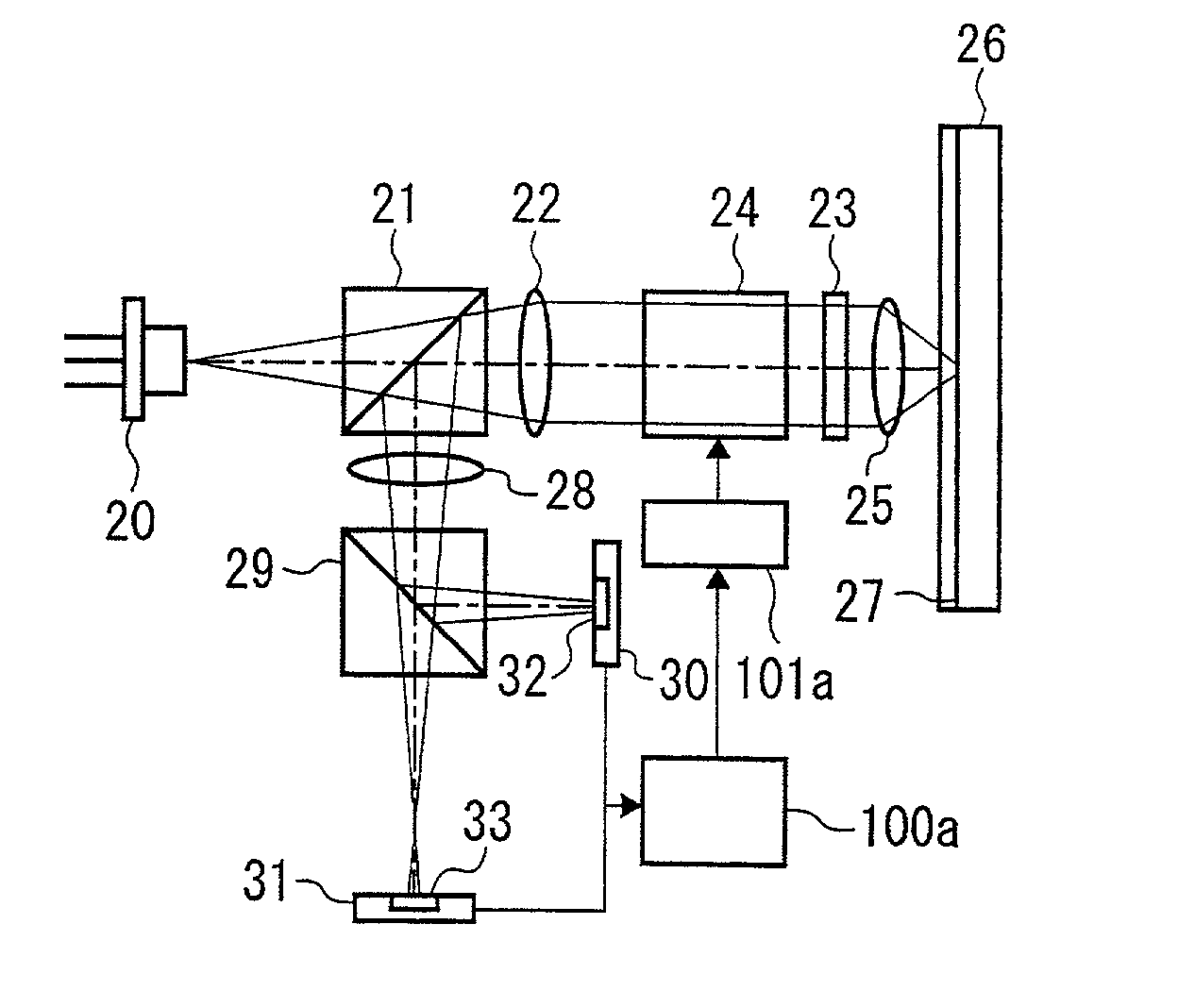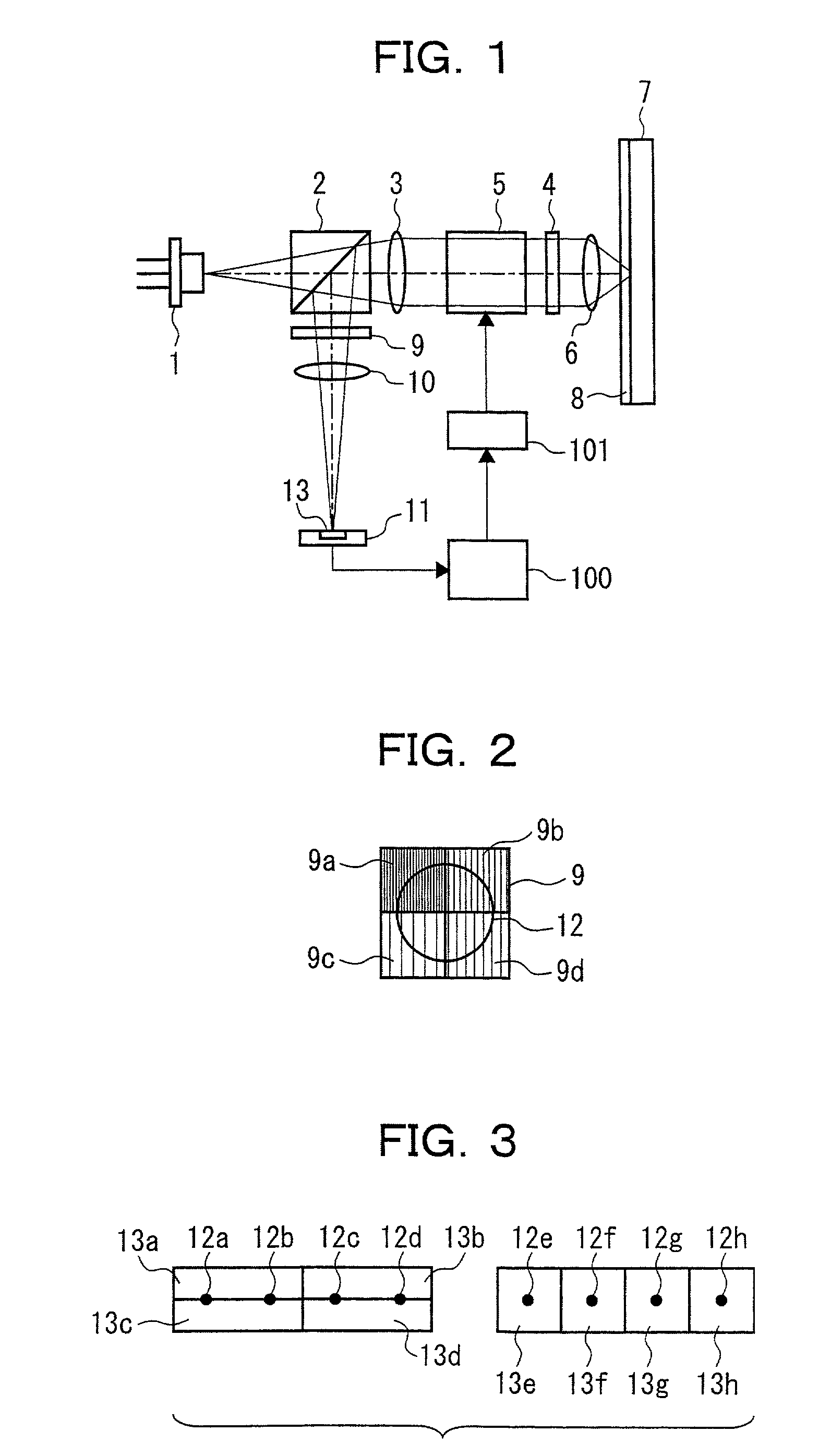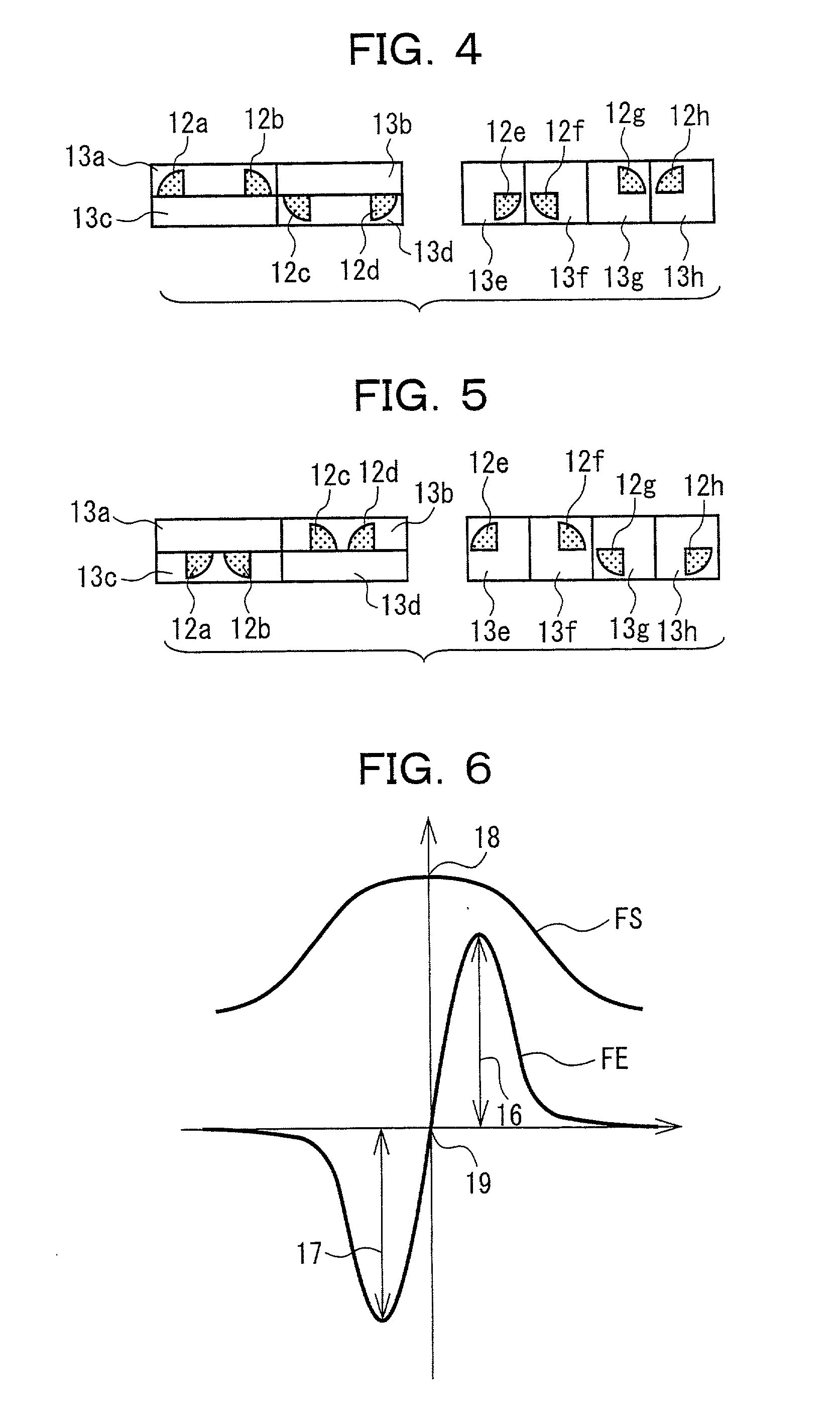Optical disk device
a technology of optical disk and optical disk, which is applied in the direction of digital signal error detection/correction, instruments, recording signal processing, etc., can solve the problems of decreasing productivity, increasing manufacturing costs, and degrading recording/reproducing characteristics, and achieves stable and high-density effects
- Summary
- Abstract
- Description
- Claims
- Application Information
AI Technical Summary
Benefits of technology
Problems solved by technology
Method used
Image
Examples
first embodiment
[0053] Embodiments of the present invention will be described below in detail with reference to the accompanying drawings. FIG. 1 shows the present invention. FIG. 1 shows an optical disk device for recording / reproducing information on an optical disk with a recording layer formed on a transparent substrate, having a typical construction for detecting focus error signals that detect the deviations of condensing points of light beams condensing on the recording / reproducing surface by means of the knife-edge method. The principle of detecting the thickness error of the transparent substrate in the optical disk device as shown in FIG. 1 using the focus error signal detection system of the knife-edge method will be described below.
[0054] First, the construction of FIG. 1 and the principle of the focus error signal detection according to the knife-edge method will be described. A light beam released from a laser diode 1 passes through a polarizing light beam splitter 2, becomes a paralle...
third embodiment
[0113] Next, we will describe the optical disk according to the present invention with reference to FIG. 16. FIG. 16 shows a general construction of the optical disk device for recording or reproducing information on the optical disk with a recording layer formed on a transparent substrate, in which the focus error signal is obtained by detecting the condensing point deviation of the light beams condensing on the recording or reproducing surface based on the astigmatism method. We will discuss below the principle of the process of detecting the thickness error of the transparent substrate in the optical disk device shown in FIG. 16 using the focus error signal detection system based on the astigmatism method.
[0114] First, the construction shown in FIG. 16 and the principle of the focus error signal detection based on the astigmatism method are explained. A light beam released from a laser diode 42 passes through a polarizing light beam splitter 43, becomes a parallel light by means ...
PUM
 Login to View More
Login to View More Abstract
Description
Claims
Application Information
 Login to View More
Login to View More - R&D
- Intellectual Property
- Life Sciences
- Materials
- Tech Scout
- Unparalleled Data Quality
- Higher Quality Content
- 60% Fewer Hallucinations
Browse by: Latest US Patents, China's latest patents, Technical Efficacy Thesaurus, Application Domain, Technology Topic, Popular Technical Reports.
© 2025 PatSnap. All rights reserved.Legal|Privacy policy|Modern Slavery Act Transparency Statement|Sitemap|About US| Contact US: help@patsnap.com



